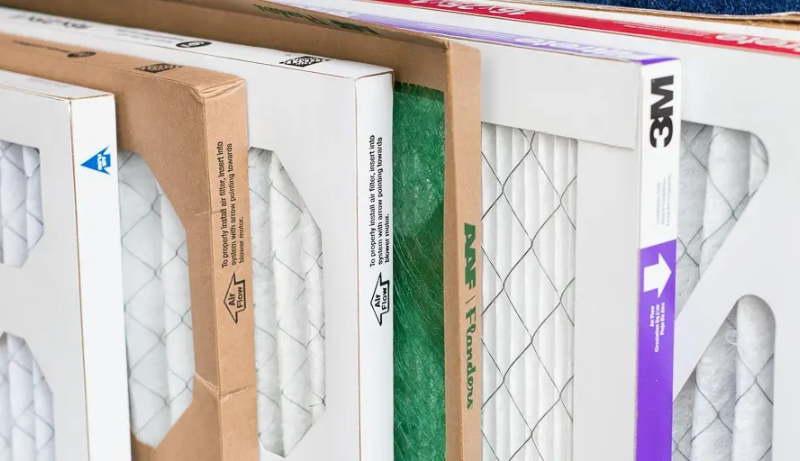Does it really matter what kind of string you use in a weed eater? A resounding “Yes!” There is no denying that it has a significant influence on the weekly garden work.
Have you ever questioned how the wrong product may leave your garden in a terrible state? Such garden work is the worst there is. That’s annoying, right?
Lacking a strong enough string may cause it to break often or adhere to the housing, which would cause you to stop right away.
And what’s this? It must regularly be reloaded, and the entire procedure must be restarted.
Do you realise how difficult it is to reload? That’s because the cut requires a lot of effort from you and is really harsh and uneven.
By the way, what’s the catch?
It is essential to have a long-lasting, robust string if you want to have the best possible experience.
This thread will make neat, even cuts. Wow, that’s remarkable. However, refreshing your queue is simple and quick when the time comes.
Let’s go right to explaining the complete procedure so you can correctly string your weed eater.
The fact that every piece of crucial information about the string is presented is a benefit.
What Makes You Need a String Trimmer?
You may maintain the grass sections that a mower can’t reach by using a string trimmer. The string is therefore important!
Have you noticed how frequently grass spaces are created along fence lines? Or perhaps the grass spreads beyond the house? Do you have any trees on your lawn?
Simply put, a string-designed trimmer makes it ideal for maintaining optimum form over the whole landscape.
What else? It makes it easier to cut precisely, especially around delicate flowerbeds and other areas where heavy weeds are outpacing lawnmowers. Interesting, isn’t it? Indeed, it is!
Let us share a fascinating story with you! Numerous string trimmers come with accessories to complete all landscaping tasks.
The advantage is that you can quickly purchase various add-ons and transform the trimmer into anything you want, such as a sweeper, blower, etc.
Craftsman Weed Eater Stringing Instructions: A Step-by-Step Guide
Since the weed eater is entirely responsible for marking your yard yields, it is essential to understand the complete procedure of stringing the weed eater.
Nothing is more unpleasant than having to continuously pause the process to correct the string, right?
You must restock the string while using a string trimmer. It is necessary to understand this procedure sooner or later, isn’t it?
Because the string is constructed of nylon, it is exceptionally strong and able to withstand any circumstances.
And what about that? It is useful for many people because it is specifically made to chop through weeds and grass.
We will walk you through every step of changing the string, including the auto-feed and bump feed procedures.
Let’s get started by discussing how to string the tool!
For an Update Feed
- Verify the manufacturer’s instructions first and foremost. You need to know about some unique specifics, thus this is required.
- Now set the trimmer on a level surface and thread the tool. Make sure the body is completely flat, especially if the trimmer has a bump feed.
- The next step is to confirm that the tool has been turned off. Second, the instrument has to be clean and free of any dirt.
- Push the tabs to release the spool and bump knob, then carefully pull them out from the sides of the trimmer head.
- Cut a fresh length of string line that is durable in design now. It should be between 10 and 20 feet long; this is the usual length.
- It must be appropriately threaded through the spool holes on half of it. Sounds challenging, doesn’t it? But rest assured, the procedure is quick.
- Each line end should be correctly threaded through the trimmer head’s eyelets.
- Connect the spool to the bump knob, turn it to the “click” position, and press.
- Ideally, wind the knob in the manner described on the reel. Arrows will be used to indicate the procedure.
- Apply enough pressure so that it winds evenly around the head.
- Make sure you leave a foot of queue intact. Got that?
How Does The Auto-Feed String Compare?
An auto-feed trimmer may be strung in a short, simple operation. Let’s delve a bit farther to better understand the entire procedure.
- The auto-feed trimmer should first be set down on a level surface. Set it on a string!
- Make sure the power is turned off and the trimmer is free of dirt and debris.
- To remove the spool cap, push the tabs that are located on the sides of the immediate trimmer head.
- Also get rid of the old spool.
- You may now use a line spool to replace the old spool.
- Along with the spool, it includes a line that has been prewrapped and is securely fastened using the retaining notches.
- What serve holding notch? Actually, they maintain the string’s position throughout installation.
- Correctly thread the string through your trimmer heads’ eyelets, mainly from both spool ends.
- After that, properly place the spool on the spindle.
- To secure the spool, softly depress it.
- Release all of the holding notches from the string line.
- The spool cap should now be positioned and snapped into position on your trimmer head.
You are now comfortable stringing the trimmer, but before you do so, double-check the type of line you are using.
That’s because there are many different diameters of strings available. But hold on! If you are having trouble finding the proper one, consult the owner’s handbook to see which size is best for you.
Features of a string trimmer:
There are a tonne of features that string trimmers have. Let’s start with some of the string trimmer’s more approachable features.
- It is commonly known that variable speed controls offer a range of power to accommodate various cutting requirements. Wow, that’s remarkable.
- Some quick-loading spools let customers input a new line without having to take the spool out of the machine.
- Centrifugal force is used by auto feed trimmer heads to release fresh string as needed.
- The trimming line procedure is really streamlined by the single line heads.
- You may securely trim the line by tapping the bump trimmer head on the surface.
String trimmer upkeep:
Trust me, a string trimmer requires enough maintenance to function well. Primary maintenance including inspection and cleaning are required for the trimmer’s integrated string. Got it?
You must be cautious while stringing a weed eater. If the tool is properly maintained, it will function for years on end to provide you the most enjoyable experience.
In addition to stringing the wire, the trimmer must also undergo oil and spark plug replacements in order to be maintained for longer periods of time.
Conclusion
It could seem difficult to string a weed eater, don’t you think?
Well, it is if you don’t know the exact procedure for stringing a Craftsman weed eater.
For many consumers, using a string trimmer is unquestionably a great deal. You need to practise a little to achieve the precise string integration that will allow you to utilise the tool effectively.
Are you perplexed? Or is the procedure intimidating to you? Oh, no need to! Spend some time getting it right by practising, and then see how easily you can use it.





Leave a Reply